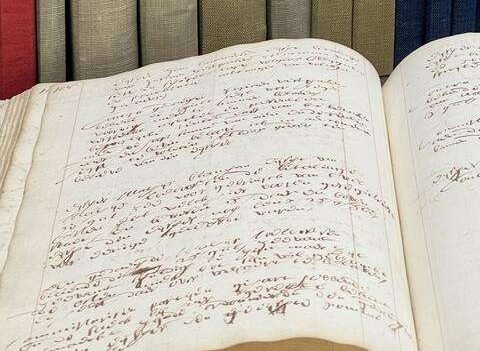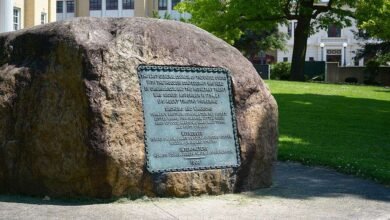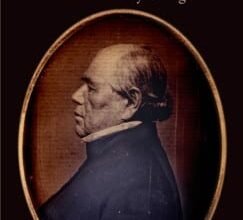Ulster County, NY, Colonial Dutch Archive Now Online in English


 In 1652, the first Anglo-Dutch colonists began arriving in the fertile lowlands of the Esopus River Valley in what is now Ulster County, NY, where the valley passes close to the confluence of the Hudson River and Rondout Creek at modern-day Kingston.
In 1652, the first Anglo-Dutch colonists began arriving in the fertile lowlands of the Esopus River Valley in what is now Ulster County, NY, where the valley passes close to the confluence of the Hudson River and Rondout Creek at modern-day Kingston.
Their earliest colonial records, written in an archaic form of Dutch by colonial secretaries not known for their gifted penmanship, are now freely available online in their entirety in English for the first time.
This area, part of the traditional homelands of a Lenape people known to history as the Esopus, was situated at the midpoint between the Dutch colonial outposts of New Amsterdam (now NYC) and Fort Orange (now Albany). Motivated by a variety of goals, these colonists initiated a complex process of gradual dispossession that threatened to plunge the region into open conflict.
On the order of Peter Stuyvesant, Director-General of the Colony of New Netherland, the scattered settlements of these colonists were consolidated behind a stockade wall and the community was conferred the name Wiltwyck in 1658.
Endowed with its own court of Schout and Schepens, this newly minted seat of colonial power in the mid-Hudson Valley became the flashpoint of a disastrous regional conflict fought in two phases from 1659-60 and 1663-64 known today as the Esopus Wars.
The resolution of this conflict occurred against the backdrop of the English takeover of New Netherland, and by 1665 the English were in firm control of the colony.
The seat of the regional court at Wiltwyck, which served both judicial and municipal roles with all proceedings recorded by an appointed secretary, persisted almost unchanged until the 1680s when it was gradually supplanted and phased out by the government of the new County of Ulster organized in 1683.
Ulster County Deed Book AA, pages 50 and 51, record the deposit of these early Dutch-language materials and sundry other public papers with the Ulster County Clerk in 1686.
Kingston’s “Dutch Records” have long been known to scholars, and were previously accessible through a published English translation published as The Dutch Kingston Papers or by visiting the Clerk’s Office to view copies of the handwritten translations prepared in the 1890s.
The records commence in 1658 with the establishment of a fortified community and local court at Wiltwyck, today’s Kingston. They broadly cover the period up to 1683 when the original Dutch colonial system was finally replaced with the creation of the original twelve counties of the Province of New York.
The documents fall broadly into two categories: the minutes of the Court of Schout and Schepens, and the Secretary’s Papers.
The court minutes contain an almost daily accounting of arbitration and governance over a community that was rapidly evolving into a seat of regional power.
The secretary’s papers contain record copies of deeds, agreements, wills, and other varieties of contract among the inhabitants offering a vivid glimpse into the material lives, social relations, and civic structure of the settlement.
The Dutch Records also have a fascinating custodial history of their own. As the number of local residents who could speak and read Dutch dwindled in the mid-19th century, an unnamed individual apparently took it upon themselves to seek a translator for these ancient papers.
No officials were notified, and the records mysteriously disappeared from the Clerk’s Office in Kingston sometime around 1855. The papers were thought tragically lost until a package arrived in Kingston from Long Island in 1895, containing all the missing records with no explanation given as to their whereabouts for the last forty years.
Realizing their luck, the Ulster County Board of Supervisors retained Dingman Versteeg, translator for the Holland Society, to prepare an English translation of the documents in 1896 so that the originals would be better preserved and more accessible in the future.
It was this translation that became the nucleus of the further translations, revisions, and publications of the Kingston Papers in the 20th century.
With the recent upload of high-resolution scans of the original documents, the Ulster County Clerk’s Office aims to expand access and encourage scholarly engagement.
“The ancient Dutch records of Kingston are easily some of the most precious documents held by any municipality in the Hudson Valley,” Acting Ulster County Clerk Taylor Bruck told New York Almanack.
“When I served as County Archivist, the Dutch records were one of the most frequently consulted and cited collections in our care,” Bruck said. “Publishing them online represents the culmination of a long-standing effort spanning multiple administrations.”
The papers are available, in English, online at the Southeastern New York Library Resource Council’s New York Heritage digital library.
Members of the public interested in exploring historical collections digitized by the Clerk’s Office can find them here.
Read more about New Netherland.
Photo of Dutch records of Kingston (courtesy Ulster County Clerk’s Office).
Source link




